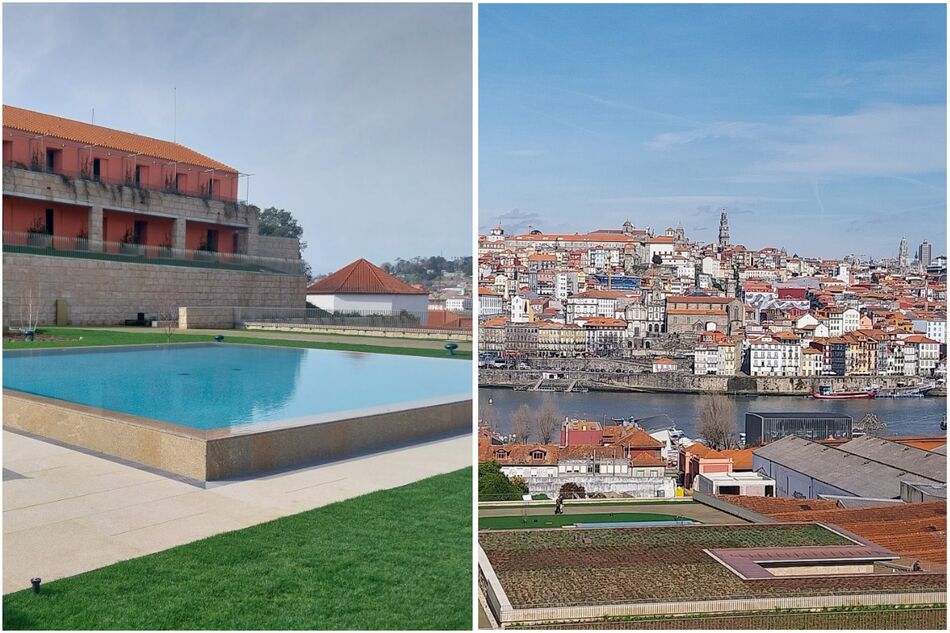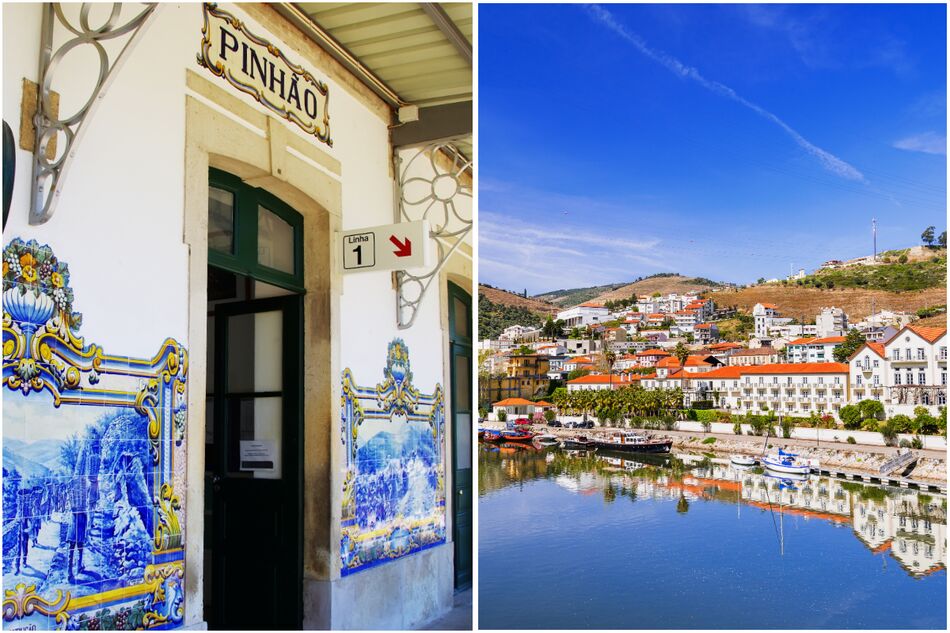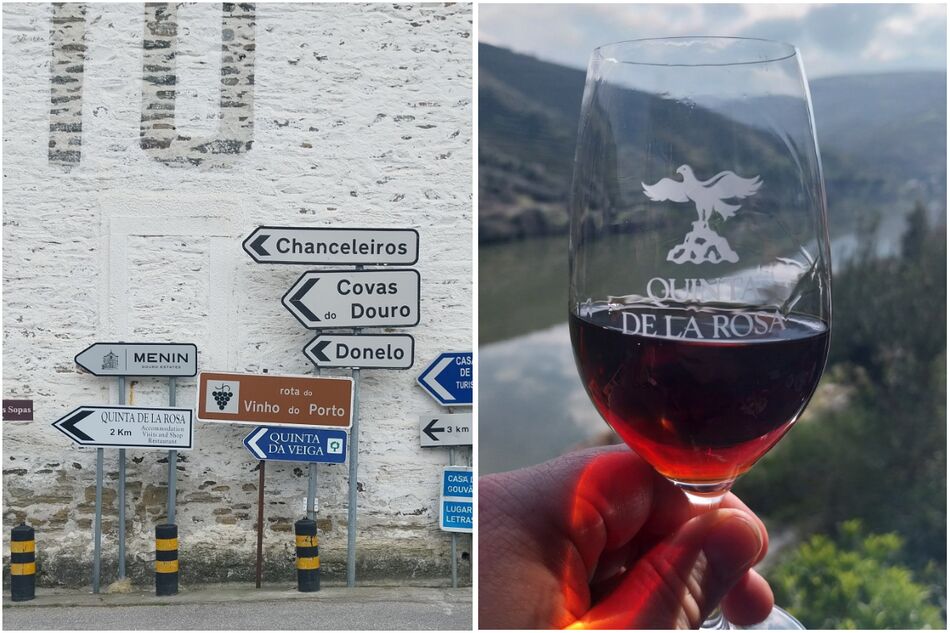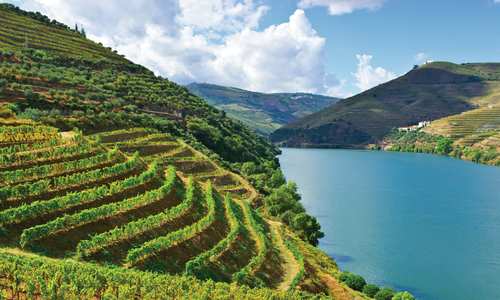Article content
23 July 2025 by Andy Austen
Renowned for its gorgeous architecture, iconic azulejo tiles, fabulous gastronomic scene and, of course, Port wine production, Porto is one of Europe’s most compelling city break destinations. Here, Wexas Travel’s Andy Austen reports back from his recent trip to Portugal’s delightful second city, paired with a journey into the nearby Douro Valley – a region of verdant hills, picturesque villages and terraced vineyards that produce some of the finest wines in the world.
Impressions of Porto & Tivoli Kopke Porto Gaia
The flight from London Gatwick to Porto took just over 2 hours and 25 minutes, and on arrival, we took a transfer straight to our hotel, situated above the banks of the Douro River in the Vila Nova de Gaia district – the historic hub of the port wine industry.
Our hotel – a collaboration project between Tivoli Hotels & Resorts and Portugal's oldest Port wine house, Kopke – offered probably the best panoramic views of Porto, looking out towards the city’s historic centre and the famous bridges spanning the Douro River.

Tivoli Kopke Porto Gaia
After settling in, a short walk down to the waterfront brought us to the Gaia Cable Car, which takes you along and above the Douro River to its terminus just by the Luis I Bridge. From here, it’s a scenic walk across the bridge to the charming, cobbled streets of the Ribeira neighbourhood.
We continued on to Porto Cathedral (a fascinating blend of Romanesque, Gothic and Baroque architectural styles) and the beautifully decorated, UNESCO-protected São Bento railway station. The main hall of the station is adorned with thousands of azulejo tiles and intricate murals representing moments in Portugal’s history.
Finally, we headed back downhill to the waterfront to sample one of Porto’s most famous creations: the Francesinha. This decadent, multi-layered sandwich of various meats and melted cheese sitting in tomato and beer sauce is certainly not for the faint-hearted. My recommendation would be to share one!
From Porto to Pinhão

Pinhão
After a delicious breakfast with panoramic views at the Tivoli Kopke, a short transfer took us along the riverside and into the Porto suburbs to Porto Campanha station, which serves the interior of Portugal and the famous line between Porto and Pinhão and beyond. The train was a Portuguese classic from the 1950s, slowly chugging through the Porto suburbs before passing through quaint villages and farmland. Soon, we were back alongside the Douro River, entering the winelands and the steeper hills lined with terrace after terrace of vineyards, including some of Portugal's most famous wineries.
After a couple of hours, the train pulled into Pinhão, a beautiful little town surrounded by vineyards and located adjacent to one of the few bridges crossing the Douro River this far down. Accommodation is available here in abundance, whether you want to stay on a small wine estate, in one of the larger quintas, or in all-out riverside luxury at The Vintage House Hotel with its river views, palm trees and swimming pool, and even a secret passageway linking to the station.
Quinta de la Rosa

Quinta de la Rosa
I stayed at Quinta de la Rosa just out of town, positioned up on a hillside with views to Pinhão and back down the river. As a working wine estate, you can indulge in a tour and wine tasting, as well as superb food at their world-famous restaurant, Cozinha de Clara, with its superbly crafted menu of Douro Valley ingredients – accompanied, of course, by wine from the surrounding vineyards.
Traditional rabelo boat trip
Traditional rabelo boats depart regularly from Pinhão pier and travel further down the Douro River, passing some of the more remote but also prestigious port wine growers. On board, the guide tells you stories of the land on both banks and if you're lucky, treats you to a glass of the local produce as you sail along the river. I’d class this as an essential experience when visiting the Douro Valley.
Nuri Conservas Pinhais, Porto
Back in Porto, it was time for a different experience – a visit to the living museum of Conserva Pinhais, a factory for the traditional canned Nuri sardines. After donning full protective clothing, you are walked around the historic offices and then into the canning factory where you can observe from various points the processes being undertaken. You even get to can your own sardines and have a personalised label produced before heading upstairs for a paired sampling of sardines and wine to round off the visit.
Final thoughts
Whether you’re coming for the history, the gastronomy, or the wines and the ports, combining a city stay in Porto with an exploration of the Douro Valley is a brilliant way to get a feel for urban and rural life in northern Portugal. And, you’ll come away with a much greater understanding of the region’s culture, and how certain industries have, over the centuries, shaped much of what the country has to offer as a destination today.




